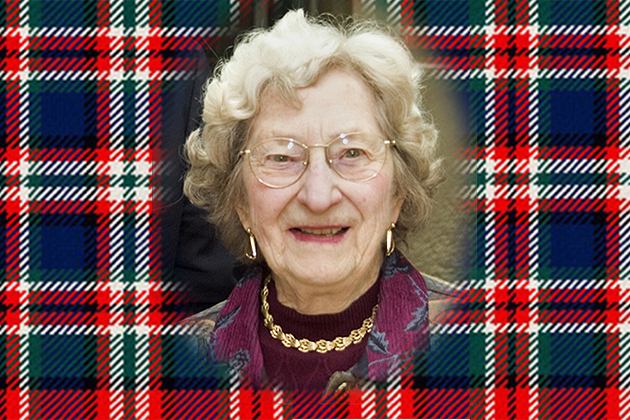
Elizabeth Macfarlane ’39 (CLAS) was a woman ahead of her time.
One of only two female math majors in her graduating class, she went on to work at the Kellogg Foundation, evaluating public health systems. After earning a master’s degree from the University of Michigan, she had a long career in biostatistics at public health departments in Michigan, Ohio, and North Carolina. She retired as director of operational research for the National Society to Prevent Blindness.
Along the way, she established a gift fund benefitting the Department of Statistics at UConn, which did not even exist when she was a student here. She died last year at age 93, leaving nearly $400,000 to the department to help support graduate students, particularly those who share her lifelong interest in public health and biostatistics.
The department, about to celebrate its 50th anniversary, has evolved in ways that meet Elizabeth Macfarlane’s vision. Many of its 16 faculty members are deeply involved in biostatistics, bioinformatics, and health sciences research. Among its spectrum of health researchers are Dipak Dey, Board of Trustees Distinguished Professor and associate dean of the College of Liberal Arts and Sciences, who has had various grants from the National Institutes of Health and has worked on modeling cancer survival rates; Ofer Harel, associate professor, who has an NIH grant to study methods to deal with incomplete data in HIV/AIDS studies; and incoming assistant professor Elizabeth Schifano, who just completed two years of postdoctoral research at the Harvard School of Public Health.

Among its 99 graduate students are 39 women.
“We definitely have a strong group of women from the U.S. and abroad doing master’s and Ph.D.’s in statistics,” says Joseph Glaz, professor and department head, who conducts his own research in health-related scan statistics.
Membership in the American Statistical Association is now about 35 percent female, and biostatisticians are in demand for jobs in government, at pharmaceutical companies, and at insurance companies assessing health risks.
The changes in the field are a far cry from when Macfarlane started her career.
“She was a real pioneer in her field,” says retired CLAS dean Ross MacKinnon, who met with Macfarlane on her visits to the statistics department in Storrs. “There were not many women in advanced statistics in her generation.”
On those trips, including one to her 50th reunion here, she would drive over from Lloyd Harbor on Long Island, her last home, in her blue Ford Taurus. Her family was from Willington, Conn., and she is now buried in Willington Hill Cemetery.
Her interests ranged far from eastern Connecticut. She traveled with the Alumni Association. She was a birder and Audubon Society member. And she was director of genealogy for the International Clan MacFarlane Society and a founding member of the Clan MacFarlane Worldwide.

“Elizabeth seemed to be a force of nature all her own,” recalled one fellow MacFarlane clan member in a memorial statement. “I traveled with her in Scotland in 2003 and 2006. She was fearless as she drove to sites to research our ancestry. She rode in speedboats to the Macfarlane islands in the middle of Loch Lomand.”
The MacFarlane DNA Project was one of her favorite pursuits. When she visited Storrs, she stopped by UConn’s Center for Applied Genetics and Technology for a tour with its director, Prof. Linda Strausbaugh. At that time, the CAGT was using DNA technology to trace the history of Venture and Meg Smith, who were once slaves in Connecticut.
“Ms. Macfarlane was particularly excited about the genomic perspectives on the descendents of Venture and Meg Smith, and we had a wonderful conversation about genetics and the meaning of family,” says Strausbaugh.
This fall, the Department of Statistics will begin a search for a faculty member to fill a genomics slot, one of three hires it will make under the new UConn faculty recruitment program.
That hire, and the focus on biostatistics that grips much of the department now, reflect directions in the field of statistics that Macfarlane foresaw.
Last spring, the Board of Trustees voted to name Room 344 in the statistics department in the Philip E. Austin Building in her honor. Her bequest will be used to fund a half research assistantship yearly for a graduate student interested in biostatistics, and to pay conference fees and travel funding for students to attend conferences.
As she once wrote, “I feel that I am contributing to something worthwhile and a benefit to young people preparing for a career.”



